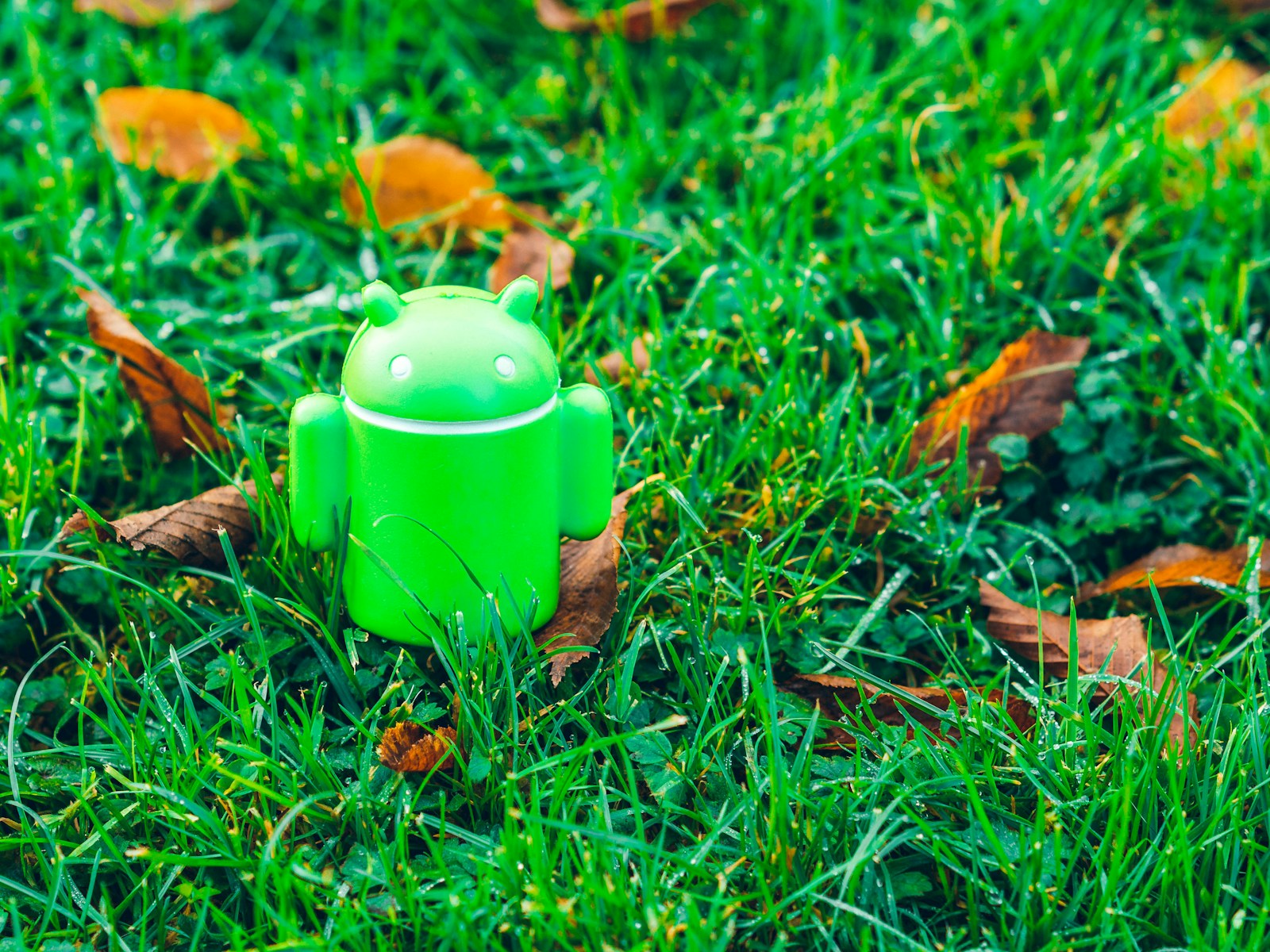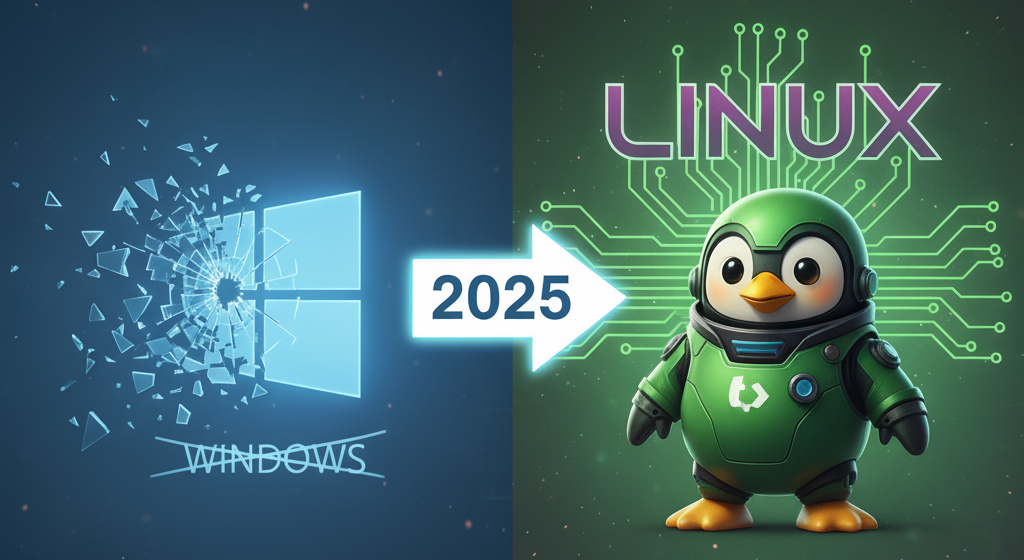Let’s talk about running Android apps on Linux. For years, this has been a clunky, frustrating experience. You’ve probably been there: you fire up a traditional Android emulator, your laptop fans spin up like a jet engine, your battery life plummets, and the app you wanted to use stutters and lags so badly it’s barely usable. It feels like you’re running a computer inside another computer, because… well, you are. It’s slow, it’s inefficient, and it feels completely disconnected from your otherwise snappy Linux desktop.
That pain is real. It’s the friction that stops you from quickly testing an app you’re developing, using that one mobile-only banking app, or playing your favorite Android game on a bigger screen. For too long, we’ve accepted this as the status quo. We’ve just assumed that running a mobile OS on a desktop has to be a resource-hogging nightmare.
I’m here to tell you that it doesn’t have to be that way. There is a better way, a solution that doesn’t just emulate Android but integrates it directly into your system. It’s called Waydroid, and it’s not just an improvement; it’s a complete paradigm shift. Forget sluggish emulation. We’re talking about running a full Android system in a lightweight container, leveraging your Linux kernel directly for near-native performance. This is the guide I wish I had years ago—a no-nonsense, comprehensive walkthrough to get you set up with the best Android experience on Linux, period.
The Old Way vs. The New Way: Why Waydroid is a Game-Changer
Before we dive into the terminal, you need to understand why Waydroid is so different. It’s not just another emulator in a sea of slow, clunky options. The magic lies in its architecture.
Traditional Android emulators, like those in Android Studio or Genymotion, are full-blown virtual machines (VMs). They use software like QEMU to emulate an entire hardware chipset (typically ARM) on your x86 machine. This involves multiple layers of translation and abstraction. The VM has its own kernel, its own hardware drivers, and its own sandboxed world. This provides great isolation, but it comes at a staggering performance cost. Every single instruction has to be translated, which is why they chew through your CPU and RAM.
Then came Anbox (Android in a Box), the spiritual predecessor to Waydroid. Anbox was a huge step forward. It pioneered the idea of running the Android userspace in a container, sharing the host Linux kernel. This eliminated the need for emulating a full hardware stack, leading to a massive performance boost. I used Anbox for years, but it had its issues. It relied on custom kernel modules that were often a pain to get working, and its development eventually stalled, leaving it lagging behind modern Android versions.
Enter Waydroid: The Evolution of Android on Linux
Waydroid takes the brilliant concept of Anbox and modernizes it. It leverages standard, upstream kernel modules like binder and ashmem (which are now part of the mainline Linux kernel) and ties directly into Wayland, the modern display server protocol for Linux. This direct integration is the key.
Think of it like this: A traditional emulator is like hiring a full-time interpreter to translate a book for you word-for-word. It’s slow and cumbersome. Waydroid is like being fluent in both languages. It lets the Android system and your Linux system talk to each other directly, without the middleman. Graphics commands, input events, and network packets are passed back and forth with minimal overhead. The result? A fluid, responsive Android experience that feels like a native part of your desktop.
This is why we’re focusing on Waydroid. It’s not just a tool; it’s the definitive solution for anyone who wants to seriously run Android apps on Linux without compromise.
Prerequisites: Gearing Up for Your Waydroid Setup
Alright, enough theory. Let’s get our hands dirty. Before we start, we need to make sure your system is ready. A little prep work here will save you a world of headaches later. This isn’t just a checklist; it’s your foundation for a stable setup.
- A Modern Linux Distribution: I’m talking about something recent. Ubuntu 20.04+, Fedora 35+, or a rolling-release distro like Arch Linux are perfect candidates. Waydroid relies on modern kernel features, so running an older, long-term support release might give you trouble.
- The Wayland Display Server: This is a non-negotiable requirement. Waydroid is built specifically for Wayland. If you’re using a modern version of GNOME or KDE Plasma, you’re likely already on it. To check, open a terminal and run this:
echo $XDG_SESSION_TYPEIf it outputs `wayland`, you’re good to go. If it says `x11`, you’ll need to log out and select the “Wayland” session from your login manager’s settings menu (usually a little gear icon).
- Essential Kernel Modules: Waydroid needs two specific kernel modules to function: `binder_linux` and `ashmem_linux`. These act as the communication bridge between the Android container and your host kernel. Most modern distribution kernels have these built-in. You can check for their device nodes like this:
ls -l /dev/{binder,ashmem}If you see both files listed, your kernel is ready. If not, you may need to install a different kernel. On Arch, for example, the `linux-zen` kernel includes them by default.
- Core Software Packages: We’ll need a few common tools to download and install everything.
- `curl`: For downloading files from the command line.
- `ca-certificates`: To ensure our connections are secure.
- `python3`: Waydroid’s tools are written in Python.
- `lxc`: The underlying container technology Waydroid uses.
- Administrative Privileges: You’ll need `sudo` access to install software and initialize the Waydroid system.
Don’t skim this section. I’ve seen countless installations fail because one of these simple checks was skipped. Take five minutes, verify your setup, and then let’s move on to the main event.
The Main Event: Step-by-Step Waydroid Installation
We’ve laid the groundwork. Your system is prepped and ready. Now, we’ll walk through the entire process, from adding the repository to launching your first Android app. I’ll provide commands for the most popular distribution families: Debian/Ubuntu, Fedora, and Arch Linux.
Part 1: Installing Waydroid and its Dependencies
First, we need to get the core packages onto your system. Waydroid maintains its own software repository to make installation and updates a breeze.
Step 1.1: Install Prerequisite Packages
Let’s start by knocking out those software dependencies we listed earlier. Open your terminal and run the command that matches your distribution.
For Debian/Ubuntu systems:
sudo apt install curl ca-certificates python3-gbinder python3-trio
What this does: This command uses `apt`, the Debian package manager, to install `curl` for downloading, `ca-certificates` for secure connections, and two specific Python libraries (`gbinder` and `trio`) that Waydroid relies on for its internal operations.
For Fedora systems:
sudo dnf install curl ca-certificates python3-gbinder python3-trio
What this does: This is the Fedora equivalent, using the `dnf` package manager to fetch the same essential tools and Python libraries.
For Arch Linux systems:
sudo pacman -Syu curl ca-certificates python-gbinder python-trio
What this does: On Arch, we use `pacman` to sync the package database (`-Syu`) and install `curl`, `ca-certificates`, and the required Python libraries, which have slightly different package names here.
Step 1.2: Add the Official Waydroid Repository
Now we’ll tell our system where to find the Waydroid software. The Waydroid team provides a convenient script that handles this for you.
export DISTRO="ubuntu" # Or "fedora" or "arch"
curl -sS https://raw.githubusercontent.com/waydroid/waydroid/main/tools/repo_installer | sudo bash
Why we do this: This is a crucial step. The first command sets an environment variable to tell the script which Linux family you’re on (for Ubuntu/Debian, just use “ubuntu”). The second command uses `curl` to download the installer script and pipes (`|`) it directly into `bash` to be executed with `sudo` privileges. This script automatically adds the Waydroid GPG key to trust the source and adds the repository URL to your system’s package manager configuration. It’s a safe, standard way to add third-party software sources.
Step 1.3: Install the Waydroid Package
With the repository added, installing Waydroid is now as simple as installing any other application.
For Debian/Ubuntu and Fedora:
sudo apt install waydroid # For Ubuntu/Debian
sudo dnf install waydroid # For Fedora
For Arch Linux: The package is in the AUR (Arch User Repository). If you have an AUR helper like `yay` installed:
yay -S waydroid
What this does: This command tells your package manager to fetch and install the main `waydroid` package and all of its remaining dependencies. This gives you the command-line tools and system services needed to run the container.
Step 1.4: Initialize the Waydroid Container
We have the tools, but we don’t have Android yet. This next command downloads the necessary Android system images and sets up the container environment.
sudo waydroid init
What this does: The `init` command connects to the official image servers and pulls down two key components: `system.img` (the core Android OS, based on LineageOS) and `vendor.img` (which contains hardware-specific bits and Waydroid customizations). This can take a few minutes depending on your internet connection, so grab a coffee. By default, it downloads the “vanilla” Android Open Source Project (AOSP) version. We’ll add Google’s magic in the next section.
Part 2: Post-Install: Adding Google Apps and Essential Tweaks
At this point, you have a functional, bare-bones Android system. But let’s be honest, for most of us, Android isn’t complete without the Google Play Store. The default Waydroid image doesn’t include it for licensing reasons, but adding it is straightforward thanks to the hard work of the community.
Step 2.1: Supercharging Your Setup with a GApps Script
Manually patching the system image to install Google Apps (GApps) is a complex and error-prone process. Thankfully, there are brilliant helper scripts that automate this entire task. We’ll use a popular and well-maintained one.
First, we need to install `git` and `lzip` if you don’t have them already.
sudo apt install git lzip # Ubuntu/Debian
sudo dnf install git lzip # Fedora
sudo pacman -S git lzip # Arch
Now, let’s clone the script’s repository and run it.
git clone https://github.com/casualsnek/waydroid_script
cd waydroid_script
sudo python3 -m pip install -r requirements.txt
sudo python3 waydroid_extras.py -i
What this does: We first clone the script’s code from GitHub. Then, we install its Python dependencies. Finally, we execute the main script with `sudo` privileges. The `-i` flag tells it to install the GApps package. The script will automatically detect your Waydroid installation, download the correct Open GApps package for your architecture, extract it, and inject the necessary files directly into Waydroid’s Android system image. It’s a beautifully automated process that saves us a ton of manual work.
Step 2.2: Starting the Waydroid Services
Waydroid runs as a systemd service. We need to start the main container service before we can launch any apps.
sudo systemctl enable --now waydroid-container
What this does: The `systemctl` command is our interface for managing services. `enable` makes the service start automatically on boot, and `–now` starts it immediately. This fires up the LXC container in the background, booting Android. The first boot can be a bit slow as Android sets itself up.
Step 2.3: A Critical Tweak for Networking
This is a big “gotcha” that trips up many new users. By default, many Android apps won’t detect an internet connection because they’re looking for a Wi-Fi or mobile data signal, not a bridged Linux network interface. We can fix this with a single command.
sudo waydroid prop set persist.waydroid.fake_wifi "true"
Why we do this: This command uses Waydroid’s property tool to set a system property inside the Android container. `persist.waydroid.fake_wifi` tells Waydroid to present the network connection to all Android apps as a standard Wi-Fi network. This simple change solves about 90% of “no internet” issues inside Waydroid apps.
Verifying Your Setup: The Moment of Truth
The time has come. All our hard work leads to this. We’ve installed the packages, initialized the system, injected GApps, and started the service. Let’s see it in action.
To launch the full Android user interface, just run this in your terminal:
waydroid show-full-ui
You should see a window appear with the familiar LineageOS/Android home screen. Success! Take a moment to appreciate it. This isn’t an emulator; it’s a full Android system running seamlessly on your desktop. You can navigate with your mouse and keyboard just like you would on a physical device.
Your end-to-end validation checklist:
- Open the app drawer and find the “Play Store” icon. If it’s there, our GApps installation was successful.
- Launch the Play Store and sign in with your Google account.
- Search for an app—let’s use something simple like “Firefox” or “VLC”—and install it.
- Launch the newly installed app from the Waydroid home screen.
- Confirm that the app runs smoothly and, most importantly, has internet access.
If you can do all of that, your Waydroid setup is complete and fully functional. Congratulations!
Troubleshooting Common Issues
Even with a perfect guide, things can sometimes go sideways. In my years of wrangling systems, I’ve learned that knowing how to fix things is just as important as knowing how to build them. Here are some common problems you might run into.
- Issue: The `waydroid-container` service fails to start.
Likely Cause: Most often, this is because the `binder_linux` or `ashmem_linux` kernel modules aren’t loaded. It could also be a permission issue.
Solution: First, re-run `ls -l /dev/{binder,ashmem}`. If they are missing, your kernel is the problem. You’ll need to use a kernel that includes them. Second, check the service logs for clues with `sudo systemctl status waydroid-container` and `sudo journalctl -u waydroid-container`. The logs never lie.
- Issue: Apps have no internet, even after setting `fake_wifi`.
Likely Cause: A firewall on your host system is blocking traffic from the container, or there’s a DNS issue.
Solution: Check your host firewall (`ufw` on Ubuntu, `firewalld` on Fedora). You may need to add a rule to allow traffic from the `waydroid0` network interface. You can also try setting a manual DNS server inside Waydroid with this command: `sudo waydroid shell setprop net.dns1 8.8.8.8` (this sets Google’s DNS).
- Issue: You see a black screen or graphical glitches when launching Waydroid.
Likely Cause: This is almost always a graphics driver or Wayland compositor issue. NVIDIA GPUs can sometimes be tricky.
Solution: Ensure you are definitely in a Wayland session (`echo $XDG_SESSION_TYPE`). Make sure your graphics drivers are fully up to date. If you’re on NVIDIA, ensure you’re using the proprietary drivers, as the open-source Nouveau drivers often struggle here.
- Issue: Apps from the Play Store install but crash on launch.
Likely Cause: This usually points to an issue with ARM/x86 translation. Many Android apps are built only for ARM processors. If you’re on a standard x86_64 laptop or desktop, you need a translation layer.
Solution: Waydroid can use a library called `libhoudini` (from Intel) to run ARM apps. The `waydroid_script` we used earlier has an option for this. Try running `sudo python3 waydroid_extras.py -s houdini` to install it automatically.
A Deeper Dive: Security, Performance, and Best Practices
Getting Waydroid running is one thing; mastering it is another. A true Linux guru doesn’t just follow the recipe—they understand the ingredients. Let’s talk about how to use Waydroid safely and efficiently.
Critical Security Considerations
This is important, so listen up. The Waydroid container runs with elevated privileges on your host system. This is necessary for its deep integration, but it has security implications. An app running inside Waydroid is not as isolated as an app in a full VM. While it is containerized, a malicious Android app could potentially find a way to affect your host system.
My advice is simple and pragmatic:
- Treat Waydroid like your phone: Only install applications from trusted sources like the Google Play Store or reputable F-Droid repositories.
- Don’t use it for high-security tasks: I wouldn’t run a critical enterprise application or handle sensitive private keys inside Waydroid. Use it for development, testing, and general consumer apps.
- Keep your system updated: This applies to both your host Linux distribution and Waydroid itself. Security is a moving target.
Performance Tuning & Optimization
Waydroid is fast out of the box, but you can make it even more seamless.
- Stop the Session to Save Resources: When you’re not using Waydroid, you can completely shut down the Android container to free up RAM and CPU cycles. Don’t just close the window; run this command:
waydroid session stopThis cleanly shuts down the Android session. To restart it, just launch an app or the full UI again, and the `waydroid-container` service will restart automatically.
- Embrace Multi-Window Mode: Running the full Android UI is great, but the real magic is running apps in their own windows, just like native Linux apps. Once an app is installed, you can see its package name with `waydroid app list` and launch it directly like this:
waydroid app launch com.google.android.apps.photosThis will launch Google Photos in its own floating window. You can even create `.desktop` files for your favorite Android apps to launch them directly from your Linux application menu. This is the key to a truly integrated experience.
Key Takeaways and Your Next Steps
We’ve covered a lot of ground, and if you’ve followed along, you now have a fully functional, high-performance Android environment running on your Linux machine. We’ve demystified the difference between clunky emulation and modern containerization, walked through a detailed Waydroid setup, and tackled post-install essentials like getting the Play Store running. We’ve even armed you with the knowledge to troubleshoot common problems and use your new setup securely and efficiently.
The key takeaway is this: Waydroid is the superior, modern solution to run Android apps on Linux. Its direct kernel and Wayland integration provides performance that traditional emulators can only dream of. It’s not just a tool for developers; it’s a powerful utility for any Linux user who wants to bridge the gap between their desktop and the vast Android ecosystem.
Where to Go From Here
Your journey doesn’t end here. This setup is a powerful foundation. Now you can:
- Explore the Official Docs: The Waydroid team maintains excellent documentation. It’s the best place for a deeper understanding of advanced configurations. You can find it at the Official Waydroid Docs.
- Automate App Launches: Try creating your own `.desktop` files to add your most-used Android apps directly to your GNOME or KDE application launcher.
- Use it for Development: If you’re an Android developer, explore connecting ADB (Android Debug Bridge) to your Waydroid instance for lightning-fast app deployment and testing, right from your local machine.
This is the power of open-source and the Linux ecosystem. We’re not just users; we’re architects of our own systems. Now go enjoy your new, blazingly fast Android setup. Let me know in the comments how your installation went or if you have any questions. I’d love to hear about the cool ways you’re using Waydroid!








